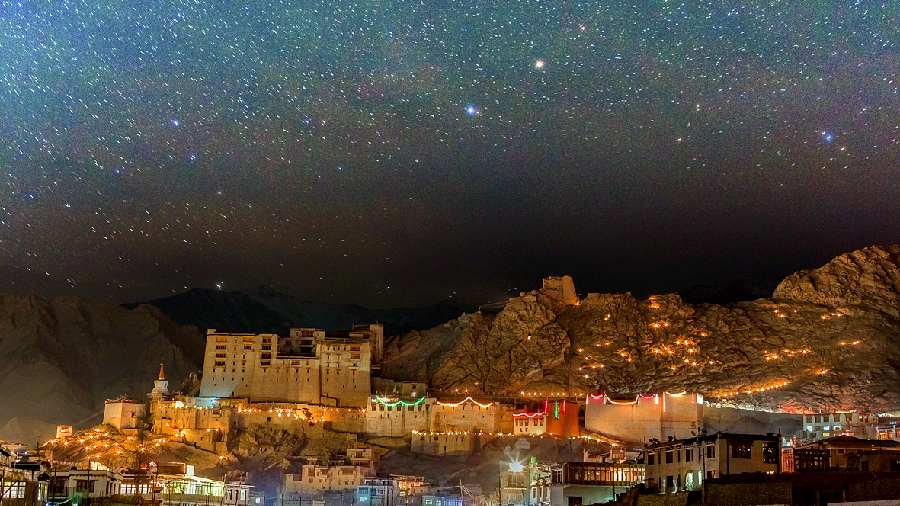Hanle village in Ladakh which is home to one of the world’s highest optical telescopes is soon going to be a dark sky sanctuary.
The telescope is situated in the Indian Astronomical Observatory and was set up in 2001. The observatory located in the Hanle river valley in the Changthang sanctuary is at a height of 14,764 feet.
This implies that the use of artificial lights in the village will be restricted to preserve the distinct and clear starry nights.
Delivering a public lecture at the National Space Science Exhibition (December 5-11) at the Science City auditorium, Dorje Angchuk of the Indian Astronomical Observatory said: “The dark sky sanctuary will entail restrictive use of lights. The local administration, Ladakh Autonomous Development Hill Council (LADHC) and the Indian Institute of Astrophysics will sensitise residents about light pollution and what it does to the atmosphere.”
Angchuk, who is an astrophotographer, showed some spectacular pictures of the Ladakh nightscape while delivering his lecture on “Looking up to the Cosmos from the Indian Himalayas”. His pictures showed how light pollution made a difference to the night sky.
“Ladakh earlier did not have much light pollution but from 1998-99 the use of diesel generators started and that created a lot of light pollution. The first people who became aware that artificial lights were spoiling the beauty of the night sky were the villagers themselves,” said Angchuk.
As part of the drive to create a dark sky sanctuary, the LADHC is distributing curtains, making light management plans and substituting white LED lights with yellow LED lights. It is also putting delineators on roads and discouraging high-beam lights.
In order to shift the load of astro-tourism from the observatory, whose primary function is to generate scientific data from night sky observations, local youth are being trained to become astronomical ambassadors.
“A group of 24 people from the village have been trained in astronomy and 18 of them have also been provided with telescopes so that they can show the sky and its celestial wonders to the tourists,” said Angchuk.
The youths, primarily unemployed, are being given 18 inches Dobsonian Telescope as part of the project. A number of astro-tourists visit the Indian Astronomical Observatory every year. “Pre-Covid, the number of such visitors was 5,000 in a year, post-Covid, it has increased to 5,000 a month, sources said.






